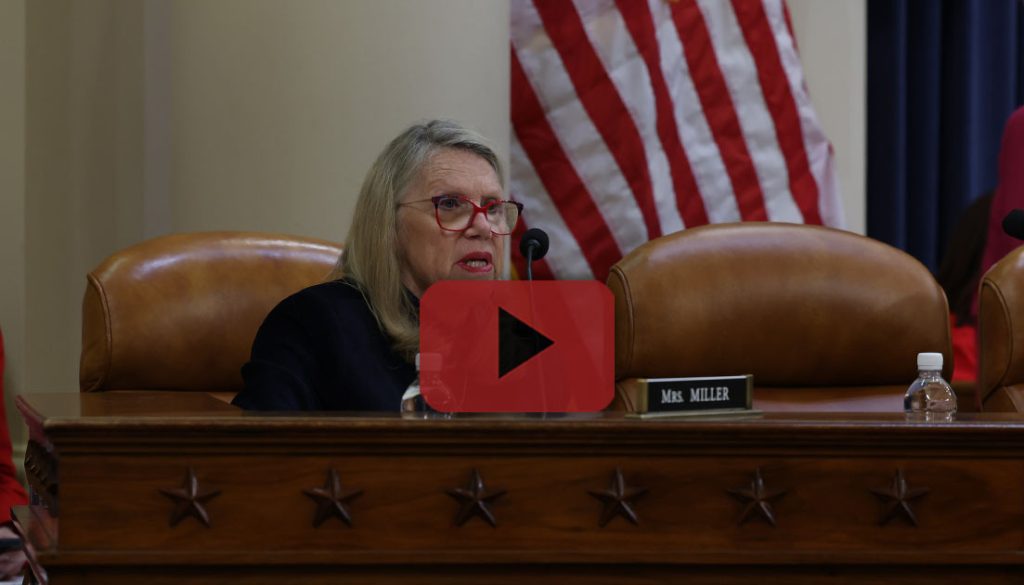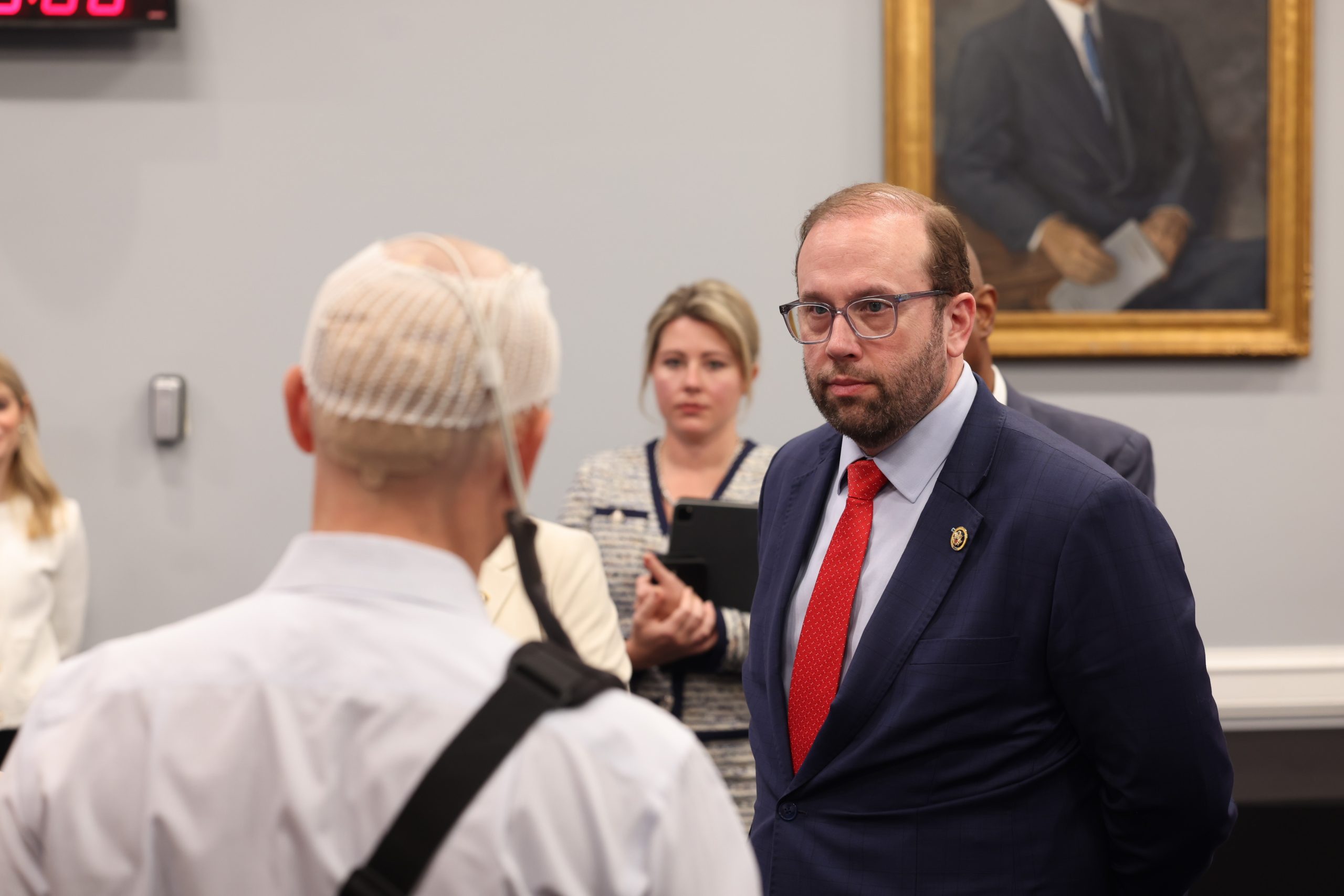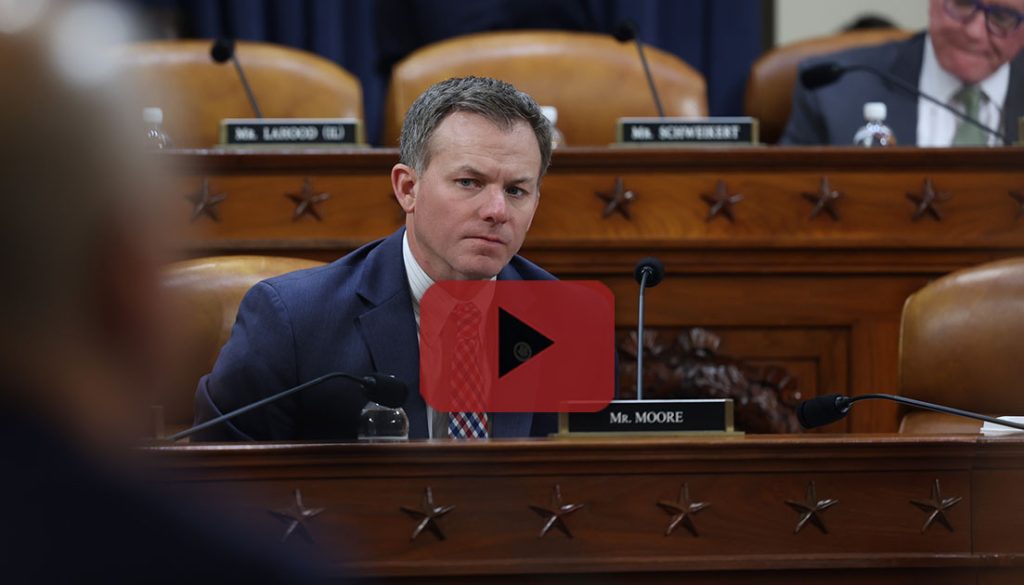Six Key Moments from Ways and Means Hearing on Enhancing Access to Care at Home in Rural and Underserved Communities
WASHINGTON, D.C. – At a Ways and Means hearing on the benefits of health care at home, Medicare patients who receive at-home care shared their stories of how both their health and quality of life have improved. Under the currently temporary Hospital at Home and telehealth flexibilities granted by Congress, millions of patients are now benefitting from the convenience of getting health care in their home. Because rural, remote, and underserved areas largely lack adequate health care services, Americans living in these communities can greatly benefit from expanded health care at home.
The witnesses who provide at-home, virtual care testified to the difference it has made for their patients – fewer emergency room and inpatient visits, and improved vital signs, to name a few. For diseases and illnesses where at-home care is possible, witnesses drew the connection between quality in-person and at-home care: in-person care is vital to setting the right treatments that patients can safely administer at home.
As the Ways and Means Committee explores ways to preserve and improve at-home care, witnesses urged the Committee to look at reforms that give patients and doctors more certainty, embrace the potential of new technology to offer the same level of care at lower prices, and consider guardrails that improve quality.
Hands-On Discussion Showcasing New At-Home Technologies
Before the hearing, the Committee held a hands-on discussion with five entrepreneurs highlighting new technologies that are improving health care for rural and underserved Americans. Members heard about and saw firsthand cutting-edge technology that is improving patient health at a lower cost to patients, providers, and taxpayers.
“I Felt Better. I Had More Energy”: Kidney Patient Shares Her At-Home Care Story
Bell Maddux is a rural Pennsylvania working mother who testified about the importance of at-home care for her health and ability to take care of her family. In her moving opening statement, Mrs. Maddux shared the story of transitioning from in-center dialysis that required hours of travel and that left her tired to at-home dialysis that better fits into her busy life. Ways and Means Committee Chairman Jason Smith (MO-08) asked Ms. Maddux to share how the at-home care impacted her quality of life.
Chairman Smith: “Your personal story of living with ESRD [end-stage renal disease] and experience with home dialysis speaks to the importance of expanding care at home options, particularly for kidney patients in rural communities who are more likely to utilize and benefit from home dialysis. What has been the impact of this option on your quality of life and your role as a working mother? What, if any, improvements would you like to see to enhance the quality and convenience of care at home?”
Bell Maddux, ESRD patient: “In terms of the impact to my quality of life, from a physical perspective, the frequency of your treatments or your dialysis treatments have a direct correlation to how you feel. I noticed immediately when I started doing that first week of home dialysis training, that having the consecutive treatments, the impact on how it is on your heart and how it hits your system: it’s just easier. I felt better. I had more energy right away.”
A Hospital At Home Story: “The comfort of home and the comfort of friends and family that made a huge difference, and there’s just nothing like it:”
Roy Underhill is a rural North Carolina patient who was able to receive treatment for sepsis at his home, instead of staying in a hospital. In his opening statement, and in response to Ways and Means Committee Chairman Jason Smith (MO-08), Mr. Underhill shared the difference that treatment at home made for his recovery. At the end of this year, the Medicare waiver that allowed Mr. Underhill to receive care at home expires.
Chairman Smith: “Mr. Underhill, you’ve received hospital level care both in facilities and now in your home through this new program. In your testimony, you spoke of the benefits of recovering from your serious condition at home – better sleep, home cooking. Please describe the impact receiving Hospital at Home had on your family and friends to see you heal in your own home.”
Roy Underhill, Hospital at Home patient: “Because of COVID being at its peak, then they could not have visited me in the hospital at all, so I would have been on my own. If you have tried to sleep in a hospital recently, you know the constant beeping that you can’t figure out what it’s for. I didn’t have that at home. I also had my own bed clothes, instead of the disturbing garment that you’re issued. All around just having my own books and being able to get a glass of water and make it to the refrigerator made such a difference. I also just felt safer and less a burden. Nobody wants to be a burden on folks. Being at home I was on my own and feeling better every day. So just that safety, the comfort of home and the comfort of friends and family that made a huge difference and there’s just nothing like it.”
Health At Home Works For Remote Areas of the Country
For patients who are forced to drive hours for a single appointment, at-home care can be a good supplement to initial care at a doctor’s office or hospital. Health Subcommittee Chairman Vern Buchanan (FL-16) highlighted that at-home care benefits patients regardless of geography, but patients who have to travel greater distances will save more time getting critical care.

Rep. Buchanan: “Being in Florida, many of our seniors are an hour away, half hour away, two hours away. But when you think about the mountainous regions of the country, a state like Colorado, it’s bigger than Florida. How’s that working out in terms of people having to move back and forth for a three-hour drive initially? How does that work? This is clearly a road that we’re going to, I think, end up going down in a very aggressive way.”
Dr. Nathan Starr, at-home care provider: “It depends on the situation. Many of our interactions we can do fully remotely, and we can have a patient seen by a specialist and they can get the data they need remotely to take great care of the patient; I think equivalent care of that patient. Other situations, they’ll come in once. Tele-oncology is a great example. They’ll come to the big center to get their biopsy to get the initial diagnosis, everything is set up, and then we will do all their [remaining] treatment in their home community.”
Medicare Could Harness Technology To Expand Home Health Care To Millions, Save Billions
Millions of Medicare patients are able to access at-home health services because of telehealth and Hospital at Home flexibilities. If Congress extended these flexibilities beyond 2024, Medicare patients could benefit from technological advancements. Rep. David Schweikert (AZ-01) highlighted the potential health and economic benefits that could occur not just for Medicare patients, but the Medicare system as a whole.
Rep. Schweikert: “You have this platform. What does it look like five years from now, if you could run amok and adopt technology? How much healthier, wealthier would our society be?”
Chris Altcheck, remote patient monitoring provider: “I think the important policy consideration is where Medicare goes, so goes the country. So the decisions you make here are incredibly important…There’s easily 30 million Medicare patients who struggle from hypertension, out-of-control diabetes, and heart failure, and the data shows consistently that we can get patients’ blood pressure under control in very meaningful ways. We can double the percentage of patients who get to that magic 130/80 blood pressure number, and we can do it for 10 million patients likely in the U.S. In heart failure, there are 7 million patients with heart failure in the U.S. – number one cause of hospitalizations for Medicare patients. We could likely reduce those hospitalizations by upwards of 20 to 30 percent, which is tens of billions of dollars.”
Remote Patient Monitoring Keeps Patients Out of the Emergency Room
Nearly 50 million Americans use remote patient monitoring (RPM), allowing health-care providers to receive real-time updates on vital signs key to maintaining patient health. Patients can take care of their health without leaving their home, while providers have accurate data to identify and preempt an emerging health problem before it escalates to a potential emergency room visit. Rep. Kevin Hern (OK-01) asked a RPM provider how his business has been able to lower costs while giving patients more freedom and independence.
Rep. Hern: “If you could share with us, what kind of savings we could see with these services and some of the successes you’ve had in ambulatory care, and things of that nature.”
Chris Altcheck, remote patient monitoring provider: “Our data shows that we’re able to reduce the total cost of care, inclusive of the additional costs for remote monitoring, by 23 percent, primarily driven by lower ED [emergency department] utilization, lower inpatient admissions, lower skilled nursing facility…Effectively, we’re keeping patients independent and healthier at home for longer which is ultimately our goal.”
“Had to Learn on the Fly”: Medicare Patients Jump Through Hoops To Get Critical Care
End-stage renal disease patients commonly use Medicare benefits to treat this chronic disease. However, the current process to get those benefits is a bureaucratic nightmare. As one ESRD patient shared with Rep. Carol Miller (WV-01), she had to navigate receiving those benefits alone with little to no help.

Rep. Miller: “I’m working on a bill with Congressman Blumenauer that aims to increase access to home dialysis by providing trained professional staff assistants to patients in their home. The bill will ensure that all patients are given the education and the support that they need to utilize home dialysis if they so choose. I’m glad to hear that staff training helped you to be able to dialyze at home, and I’m hopeful that my bill will help provide coverage for these services to more ESRD patients. Mrs. Maddux, share what your experience was like navigating Medicare coverage for your training and dialysis at home.”
Bell Maddux, ESRD patient: “It was definitely a huge learning experience for me and a lot that I had to learn on the fly and through trial and error. I learned that Medicare is required for people who are on dialysis for a period of time. Even though I maintain my health care coverage and my main insurance coverage through my employer, I was still required to have Medicare.”
“We Can Do the Exact Same Thing”: Telehealth Gives Patients Freedom and Control Over Care
Telehealth allows patients to stay located in their communities surrounded by friends and family, and as one witness testified to Rep. Blake Moore (UT-01), in many cases, patients often receive similar quality care as in-person care. In fact, results show that 91 percent of patients have a favorable experience and 78 percent would complete a future appointment using telehealth.
Rep. Moore: “Can you discuss what those programs look like for patients as well as how you balance in person versus virtual care?”
Dr. Nathan Starr, at-home care provider: “The feedback we’ve gotten from patients has been really positive. Having done a lot of virtual care myself, it is really fun to be able to tell a patient, ‘If we brought you up to our center in Salt Lake City, I would take care of you. I am telling you, we can do the exact same things we would do down there. You’re going to get the exact same care.’ That is incredibly reassuring. The other thing we see all the time is many of these patients who live in rural areas don’t want to leave. We’ve heard many times, ‘I would rather die than go up there and have to deal with all that.’ The fact that we can care for them where they are in place is hugely powerful.”







